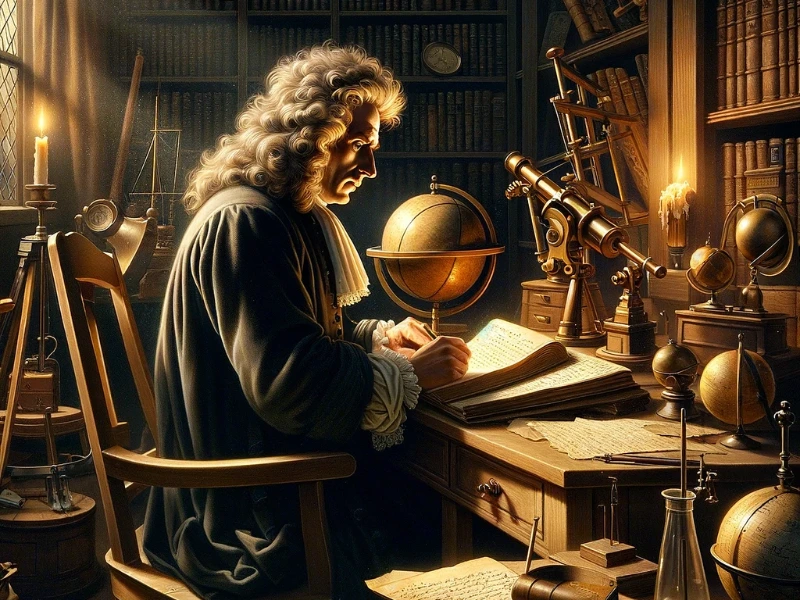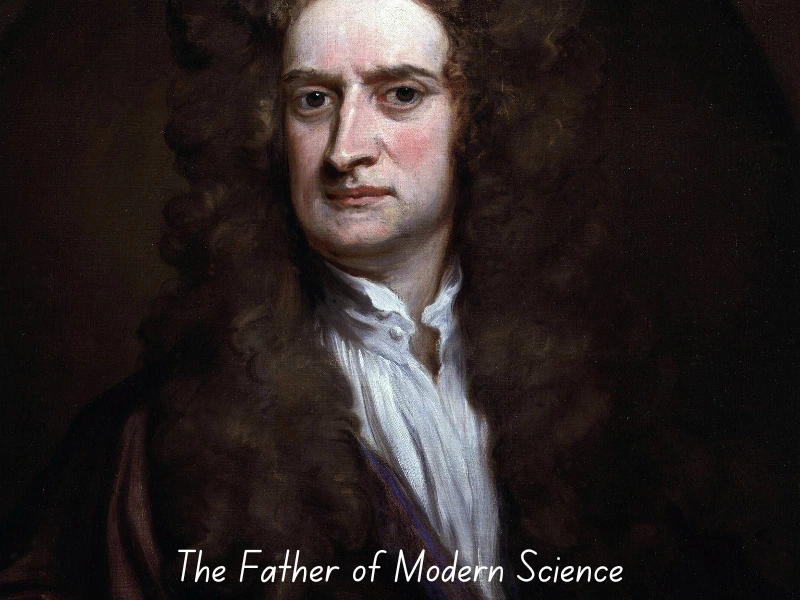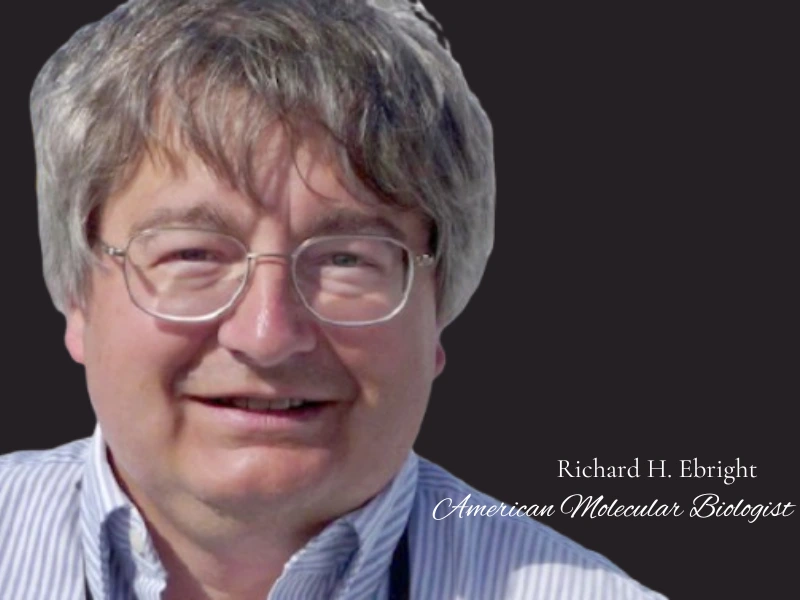Who Was Isaac Newton?
Isaac Newton was the all-time great and a very celebrated English mathematician, physicist, and astronomer in his lifetime. Major contributions of Sir Isaac Newton are the law of motion and the universal law of gravitation, which fully changed our understanding of the whole physical world.
Early Life and Family Background
Sir Isaac Newton was born on 4 January 1643 AD at Woolsthorpe, Lincolnshire, England. His father had died when he was very young, and immediately after that his mother went through a marriage, and young Isaac was left behind with his grandmother, who cared for him through the problematic early life; however, evidence of both his intelligence and his being curious is clearly found quite early on.
Sir Isaac Newton Education
Early Education
He went to The King’s School in Grantham, England, where Newton displayed interest in mechanics and mathematics. He completed this stage of his primary schooling before returning briefly to tend his family’s farm.
University Education
Trinity College, Cambridge (1661-1665, 1667-1668)
In 1661, Newton entered Trinity College, Cambridge. Initially, he followed the standard course on Aristotle’s philosophy; however, he soon turned to be highly interested in the works of modern philosophers and scientists, such as René Descartes, Galileo, and Kepler.
In 1665, Newton graduated with a Bachelor of Arts degree. However, soon afterwards, the Great Plague shut down the university and sent Newton back to Woolsthorpe.
1665-1667: He spent the period back home in England. During this period, he made most of the important discoveries: work on calculus, laws of motion, and optics.
1667: Returns to Cambridge as fellow there appointed Lucasian professor of mathematics in 1669—the most dignified seat for an analyst, I guess.
Isaac Newton’s Major Contributions to Science
Laws of Motion
Newton’s three laws of motion form the cornerstone of classical mechanics:
- An object at rest stays at rest unless acted upon by an external force.
- The force acting on an object is equal to its mass times acceleration (F=ma).
- For every action, there is an equal and opposite reaction.
These principles revolutionized the study of physics and are still used in engineering, aerospace, and mechanics today.
Universal Gravitation
Newton is the man who is famously known for his universal law of gravitation that explains the force responsible for attracting two bodies toward each other. According to Newton, every mass exerts gravitational forces, and these forces keep planets in orbit around the sun. The Universal Law of Gravitation states that the gravitational force between two objects is directly proportional to the product of their masses and inversely proportional to the square of the distance between their centers.
F = G ⋅ m1 ⋅ m2 / r2
F = Force
G = Gravitational constant
m1 = Mass of object 1
m2 = Mass of object 2
r = Distance between centers of the masses
Contributions to Optics
Newton discovered that white light contains all the colors of the spectrum by using a prism. He also invented the reflecting telescope, which produced sharper images and revolutionized observational astronomy.

Newton’s Work in Mathematics
Development of Calculus
During the mid-1660s, Newton’s calculus discovery enabled scientists to model dynamic systems, from planetary motion to fluid dynamics. Although he had disagreements with German mathematician Gottfried Wilhelm Leibniz over its discovery, Newton’s methods are foundational to modern science.
Advancements in Algebra and Geometry
Newton also contributed significantly to solving algebraic equations and refining geometric principles that paved the way for further advancements in mathematics.
The Principia Mathematica
One of the most influential books in the history of science is Newton’s Philosophiæ Naturalis Principia Mathematica, published in 1687. The book formulated the laws of motion, universal gravitation, and their applications to celestial and terrestrial mechanics. The Principia has shaped the methodology of scientific inquiry. The great thinkers, including Einstein, were influenced by the work of this man, who made experimentation and mathematical reasoning very important.
Isaac Newton’s most famous Books
“Philosophiæ Naturalis Principia Mathematica (Mathematical Principles of Natural Philosophy, 1687)”
It is commonly called the Principia, and this actually happens to be Newton’s most famous work. Here, he gave out his laws of motion and universal gravitation that formed the foundation of the principles of classical mechanics.
“Opticks (1704)”
This book describes the experiments that Newton had performed using light and color. His theories on the nature of light, his discovery concerning the spectrum of colors, and how he had worked upon the theory of colors have all been described here.
The Method of Fluxions published posthumously in 1736
This is the paper in which Newton has described how he devised calculus, which he had called “fluxions.” Although he never published this work in his lifetime, it still affected mathematics.
“The Chronology of Ancient Kingdoms Amended (published posthumously in 1728)”
This would reflect Newton’s interest in history and biblical chronology. This work contained studies and theories regarding the chronology of ancient civilizations.
“Observations upon the Prophecies of Daniel and the Apocalypse of St. John (published posthumously in 1733)”
Here, Newton applied the analytical method to the interpretation of prophetic scripture, thus showing an interest in theology.
Also read Albert Einstein Biography
Awards won by Sir Isaac Newton
Knighted by Queen Anne (1705)
At age 52, he was knighted, and thus his name became Sir Isaac Newton, in commemoration of his contributions towards science and public service—the first scientist to be knighted.
Fellow of the Royal Society (1672)
He was elected fellow of the Royal Society of London, an institution of prominence in scientific research, wherein he served as President from 1703 up to 1727.
Warden and Master of the Royal Mint (1699)
He was promoted to the position of Warden of the Royal Mint in 1696. The Master of the Mint role he received in 1699 was an upgrade in position. He played a role that led to the success of the Royal Mint: reformation of England’s currency.
Some Famous Quotes by Isaac Newton
- “If I have seen further, it is by standing on the shoulders of giants.”
- “What we know is a drop; what we don’t know is an ocean.”
- “Gravity explains the motions of the planets, but it cannot explain who sets the planets in motion.”
Isaac Newton’s Life Beyond Science
Role at the Royal Mint
He reformed England’s currency system while Warden and later Master of the Royal Mint. He combated counterfeiting and brought in measures that would stabilize the economy. Newton, being a versatile scientist and administrator, showed his expertise.
Warden of the Royal Society
Newton’s tenure as President of the Royal Society established his dominance over scientific progress. He guided research, mentored young scientists, and upheld rigorous scientific standards.
Newton’s Personality and Legacy
Newton’s Complex Personality
Newton was a fierce competitor and intensely private man. His intense focus and perfectionism made him achieve groundbreaking feats, but they also fueled feuds with Robert Hooke and Gottfried Leibniz in his lifetime.
Why Newton is a Timeless Icon
- Scientific Foundation: His laws of motion and gravitation remain central to physics and engineering.
- Inspiration for Innovation: Newton’s methodologies continue to guide scientific inquiry and innovation.
- Universal Impact: From space exploration to everyday technologies, his contributions are evident in numerous fields.
Lessons from Isaac Newton’s Life
Newton’s life is an example of how curiosity and persistence can bring great value. His work into problems and finding answers transformed science forever. Newton’s discovery was based on insatiable curiosity about the world, reminding us to keep on asking questions in our pursuits.
Conclusion: Isaac Newton’s Enduring Legacy
Issac Newton’s unparalleled contribution toward humanity is that no individual except him has left the deepest mark in human minds to have ever happened. The grandeur of his excellence goes with what he discovered about the nature and mysteries of the universe for subsequent generations to explore, find, and innovate until an apple falls. The story of a falling apple through endless space takes us up.
FAQs
Why is Isaac Newton the “Father of Physics”?
Newton is called the “Father of Physics” because his work in mechanics, gravitation, and optics established fundamental principles that shaped modern physics.
What are 10 facts about Isaac Newton?
Born in 1643 in Woolsthorpe, England.
Discovered the laws of motion and gravity.
Invented calculus independently of Leibniz.
Published the Principia, a foundational science book.
Made discoveries in optics, like the color spectrum.
Knighted in 1705, becoming Sir Isaac Newton.
Served as Warden of the Royal Mint.
Buried in Westminster Abbey.
Had a famous rivalry with Leibniz.
Known as one of the greatest scientists in history.
Why is Newton called “Sir”?
Newton was knighted by Queen Anne in 1705, earning him the title “Sir” in recognition of his contributions to science and public service.
What is Isaac Newton best known for?
Isaac Newton is best known for his laws of motion and universal gravitation, which laid the foundation for classical physics.
What was Isaac Newton’s IQ?
As a matter of fact, IQ is not known of Newton, as IQ testing was still not known during his lifetime. However, based on the modern estimates using intellectual achievements, one may evaluate his IQ to lie somewhere in the range between 190 and 200 years that would place him one among the greatest minds throughout human history. Such superior capabilities in analytical and problem solving are indicated by his contribution, both in mathematics, physics, and astronomy, in his works.
Where is Isaac Newton’s grave?
Isaac Newton is interred in Westminster Abbey, London, England. He was buried there in the year 1727. His grave lies in the raised Scientists’ Corner, popularly referred to as Poets’ Corner, of the Abbey. His tombstone and monument commemorate his science and mathematics. Indeed, he is one of the earliest scientists to be buried in Westminster Abbey. He was well admired both when he was living and subsequently, as the fact that he was accorded such honours after death depicts.



